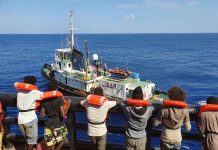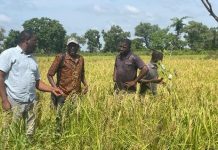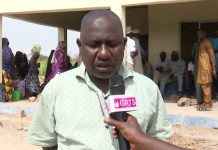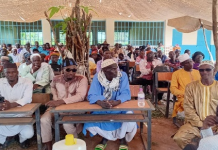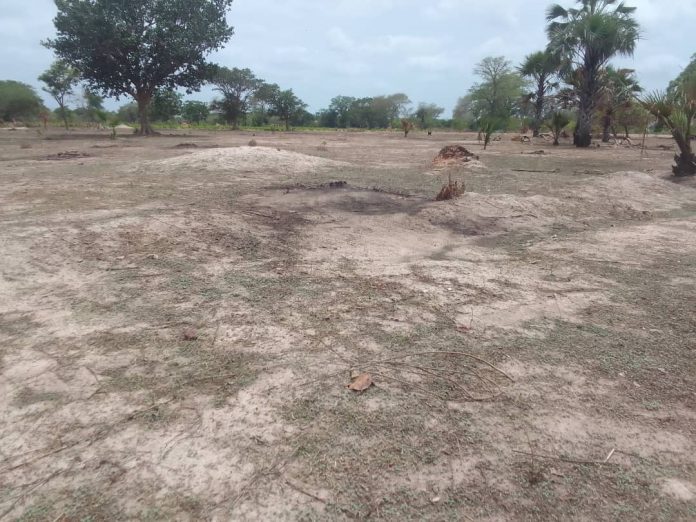By Nelson Manneh
Despite the end of military operations in Senegal’s restive Casamance region more than three years ago, fear continues to grip Gambian border communities, where many villagers remain reluctant to cultivate farmlands near or across the Senegalese border.
As the 2025 rainy season begins, a Foroyaa visit to several Foni villages reveals a deep and lingering sense of anxiety. While some residents have cautiously resumed farming, others say they are still haunted by the trauma of the 2022 Senegalese military raids in Casamance — operations aimed at rooting out the separatist Movement of Democratic Forces of Casamance (MFDC).
In March 2022, Senegal’s army launched a major offensive against MFDC factions led by Salif Sadio, targeting alleged rebel bases and combatants linked to both separatism and organized crime. The military incursion followed deadly clashes along the Senegal-Gambia border, where four Senegalese soldiers were killed and seven captured by MFDC fighters. The broader Casamance conflict, dating back to 1982, stems from longstanding grievances of marginalization and has evolved into a protracted, low-intensity war punctuated by periodic violence.
The cross-border military raids displaced more than 6,000 people across southern Senegal and The Gambia, with 691 individuals seeking refuge in Gambian communities.
Today, in border villages like Kusamai, Gifanga, and Kappa, the shadow of that violence still looms large. For many, farming is no longer simply an agricultural activity — it is a calculated risk.
Landing Colley, a resident of Kusamai Village, was seen clearing a small farmland close to his home. He said he has a larger farm in Casamance but has not returned there since the 2022 raids.
“My life is more precious than the farmland,” he said. “I can only farm when I am alive. Dead bodies don’t farm. So I cannot risk my life just because of survival.”
Recalling the events of 2022, Colley said: “We lived and saw bullets crossing over our heads. People died. Some were wounded. Many fled and accepted to be refugees in foreign lands.”
He added that although years have passed, the psychological wounds remain fresh. “Some of us are still living with those memories. I can’t even remember the last time I visited my relatives in Casamance. The fear is still inside me.”
In contrast, others like Modou Gibba, the Alkalo (village head) of Gifanga in Foni Bintang Karanai, have cautiously returned to their cross-border farmland.
“I have no other farmland. This is the only land I have — partly in The Gambia, partly in Casamance — and I cannot abandon it,” Gibba said.
He recalled that after two years of quiet, he cultivated a portion of the land and experienced no disturbance. Encouraged by that, he fully farmed the land last year and is preparing to do so again this season.
“I admit that there are still people who are afraid to go back, especially those with land deeper into Casamance,” he said. “But we are many who must cross the border to access viable farmland.”
Gibba noted that during the peak of the military campaign, his village hosted many displaced people fleeing Casamance. “Many of them have since returned home, but a few remain. They may never go back.”
In nearby Kappa Village, residents are visibly preparing for the farming season — clearing plots and gathering tools — but many avoid large plots near the border.
“Most of us are farming small areas close to the village,” one villager explained. “The big farms near the border are still left untouched. There may be no fighting now, but the fear remains.”
Casamance’s conflict dates back more than four decades. In December 1983, following violent MFDC demonstrations in Ziguinchor that left several dead, the Senegalese state cracked down, driving the movement underground. In response, MFDC formed an armed wing, Attika, which launched a guerrilla insurgency targeting the Senegalese military and state symbols.
The government later divided the Casamance region into two administrative areas — a move believed by some to have been intended to dilute separatist momentum. Over the years, internal divisions and shifting allegiances within the MFDC have further complicated peace efforts.
An anonymous Gambian soldier stationed at the military post in Sibanor, a border town in Foni, told this reporter that he has not witnessed any conflict since his recent deployment.
“I came here a few months ago and we patrol the borders regularly. To me, there is peace,” he said. “The villagers know better than I do, but from my experience, there has been no sign of conflict.”
The soldier added that both his unit and the Fourth Infantry Battalion in Kanilai routinely patrol the border belt, and no disturbances have been reported in recent months.
Though the guns have largely fallen silent in Casamance, fear still shapes daily life for many Gambians living along the border. For now, the rainy season brings a choice: to farm in safety and yield less, or to risk returning to fertile fields that once sustained livelihoods — but are now haunted by memories of war.
Whether more villagers will reclaim their abandoned farms remains to be seen. What is clear, however, is that peace — even when quiet — does not always mean security.

